 |
Home | Ferry Tickets | Ferry Companies | Ferry Routes | Ferry Ports | Extras
Ferry Types - Descriptions of the Various Types of Ferry
|
Types of Ferry Available to book through Ferry Price |
|
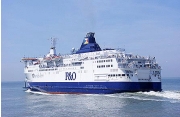 |
Ro-Ro FerriesRORO vessels have built-in ramps which allow the cargo to be efficiently "rolled on" and "rolled off" the vessel when in port. While smaller ferries that operate across rivers and other short distances still often have built-in ramps, the term RORO is generally reserved for larger ocean-going vessels. The ramps and doors are usually at the stern. Most well known ferry services like P&O and Sea France, especially on the channel offer Ro-Ro ferries. |
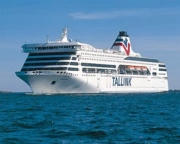 |
Cruise FerriesA cruiseferry is a ship that combines the features of a cruise ship with a RoRo ferry. A cruiseferry is a ship that combines the features of a cruise ship with a Ro-Pax ferry. Many passengers travel with the ships for the cruise experience, staying only a few hours at the destination port or not leaving the ship at all, while others use the ships as means of transportation. Cruiseferry traffic is mainly concentrated in the seas of Northern Europe, especially the Baltic Sea and the North Sea. However, similar ships traffic across the English Channel as well as the Irish Sea, Mediterranean and even on the North Atlantic. Cruiseferries also operate from China and Australia. |
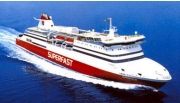 |
Fast Ro-Pax FerriesFast RoPax ferries are conventional ferries with a large garage intake and a relatively large passenger capacity, with conventional diesel propulsion and propellers that sail over 25 knots. Pioneering this class of ferries was Superfast I between Greece and Italy in 1995 through ferry company Superfast Ferries. |
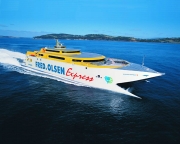 |
Catamaran FerriesA catamaran is a type of multihulled ferry consisting of two hulls, or vakas, joined by some structure. Catamarans are normally associated with high-speed ferry services. Stena Line operates the largest catamarans in the world, the Stena HSS class, between the United Kingdom and Ireland. These waterjet-powered vessels, displacing 19,638 tonnes, are larger than most catamarans and can accommodate 375 passenger cars and 1,500 passengers. Other examples of these super-sizer catamarans are found in the Brittany Ferries fleet with the Normandie Express and the Normandie Vitesse. |
 |
Double Ended FerriesDouble-ended ferries have interchangeable bows and sterns, allowing them to shuttle back and forth between two terminals without having to turn around. |
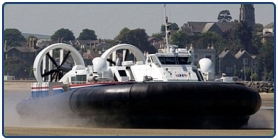 |
HovercraftHovercraft were developed in the 1960s and 1970s to carry cars. The largest was the massive SRN4 which carried cars in its centre section with ramps at the bow and stern between England and France. The hovercraft was superseded by catamarans which are nearly as fast and are less affected by sea and weather conditions. Only one service now remains, a foot passenger service between Portsmouth and the Isle of Wight run by Hovertravel. |
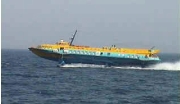 |
Hydrofoil FerriesHydrofoils have the advantage of higher cruising speeds, succeeding hovercraft on some routes. Hydrofoils are passenger only vessels, because of this many have been replaced by high speed catamarans which can also carry vehicles. Some Hydrofoil vessels are still used in Europe, especially for short hop journeys between islands. |
